Swedish fighter jets intercepted Russian warplanes over the Baltic Sea, marking an important moment in their integration with NATO.
The Swedish JAS-39 Gripen jets took to the skies on Monday morning in their first real mission alongside German and Belgian aircraft after their flags were raised at NATO headquarters in Brussels.
Following Sweden’s official accession to the alliance on March 7, its multi-role aircraft took part in their first visual identification mission as part of NATO’s air policing mission over the Baltic Sea.
In a demonstration of operational readiness, JAS-39 Gripens flew twice on March 11 to identify and intercept Russian military aircraft.
NATO’s Combined Air Operations Center (CAOC) in Uedem had detected an unidentified track over the Baltic Sea stretching from Kaliningrad to the Russian mainland – prompting controllers to launch the Swedish jets from Sweden.
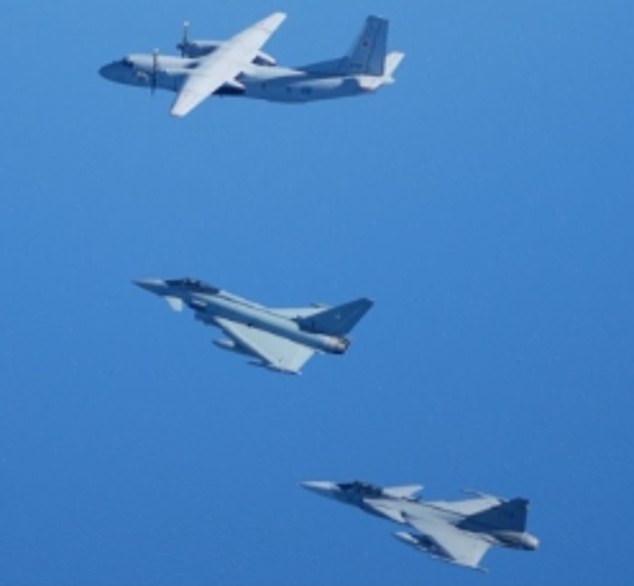
Sweden’s JAS-39 Gripen operated alongside a German Eurofighter to intercept a Russian An-26 warplane in an incredible display of integration within NATO Air Power
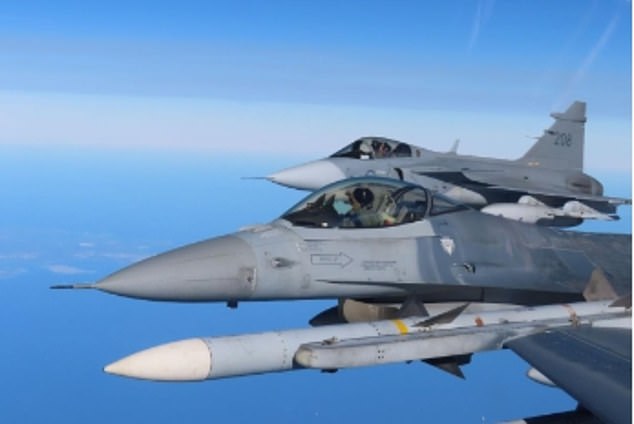

Monday’s visual identification missions were the first time Sweden’s Gripen jets had been scrambled by NATO. The tense events also took place on the Scandinavian nation’s fourth day as a NATO member
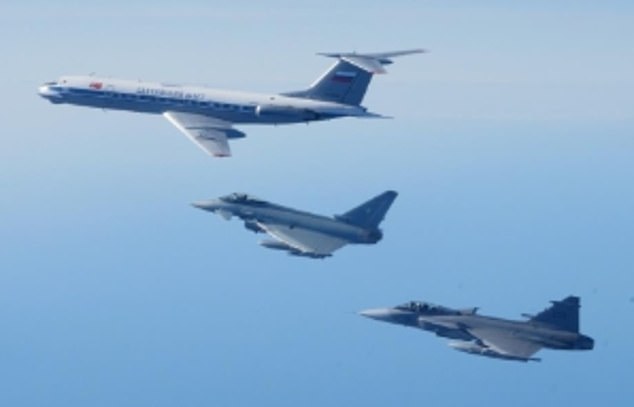

German fighters have been responsible for the NATO Baltic Air Policing mission in Lielvarde since March 1, but were joined on Monday by their Swedish allies
They also ordered Belgian F-16 fighters to take off from Šiauliai Air Base, Lithuania.
Once in the sky, the Allies both visually identified a Russian Tu-134 military aircraft that was not on a flight plan.
Another Russian military aircraft – an Antonov An-26 turboprop – was intercepted later that day by Swedish Jas-39 Gripen jets and German Eurofighters.
The An-26 had appeared on NATO radar screens, and in a tense moment the CAOC alerted the German Quick Reaction Alert Interceptors at Lielvarde, which launched the runway.
Sweden’s smooth operation alongside the Germans showed how they are already integrated into NATO’s air power.
“This first real mission of the Swedish Gripen took place just days after joining NATO,” NATO said in a statement.
‘It is an impressive demonstration of the deep integration the Swedish Air Force has achieved with NATO’s air police forces.’
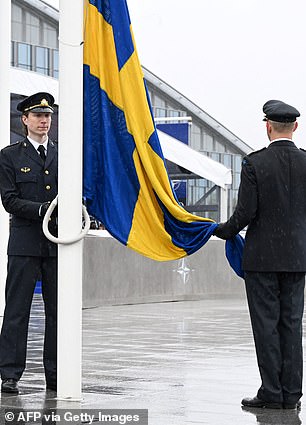

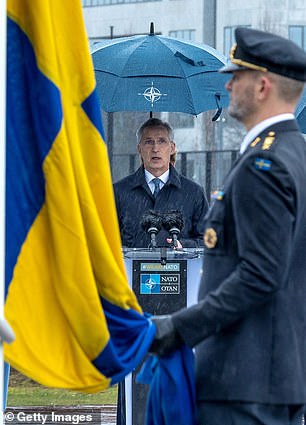

The Scandinavian nation’s accession to NATO adds strength to their power and control over the Baltic region
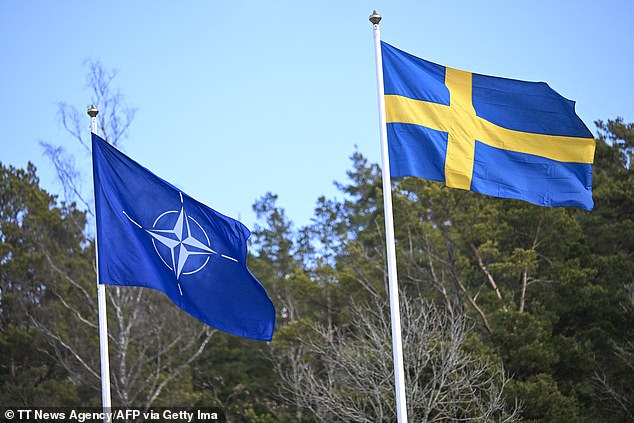

Sweden’s leader said: ‘The Russian, brutal, full-scale invasion of Ukraine united Sweden behind the conclusion that full NATO membership is the only reasonable choice’
The sequence of events proved the impressively dynamic nature of NATO Air Policing operations and the rapid response required from member nations.
“This rapid coordinated response by NATO jets from Belgium, Germany and Sweden protecting the skies over the Baltic Sea region underscores the close integration and responsive command and control arrangements within the Alliance,” NATO’s Allied Air Command wrote.
German fighters have been responsible for the NATO Baltic Air Policing mission at Lielvarde since 1 March, while Belgian jets have been deployed to Šiauliai since 1 December 2023.
After the visual identification missions were completed, the NATO aircraft from Belgium, Germany and Sweden returned to their bases.
But this is not the only recent example of NATO members being conned into carrying out a double-interception mission of Russian warplanes over the Baltic Sea.
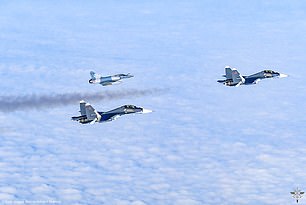

NATO said two French Mirage 2000-5s intercepted a Russian SU-30-M aircraft over the Baltic Sea last month
Last month, NATO revealed that two French Mirage 1000-5s intercepted a Russian SU-30-M jet before intercepting another Putin warplane north of Poland.
It came after the Russian president made a direct threat to bomb the West, accusing NATO and the US of ‘preparing to attack’ Russia in his annual address to the nation.
Monday’s double interception of Russian warplanes, which took place on the same day Sweden’s flag was raised at NATO headquarters, was also another blow to Russia’s tyrannical leader Putin, two years after his full-scale invasion of Ukraine.
Sweden became the 32nd member of the alliance during a ceremony on March 11, where Swedish Prime Minister Ulf Kristersson, Crown Princess Victoria and NATO Secretary General Jens Stoltenberg watched two soldiers raise the blue banner adorned with a yellow cross among the official circle of national flags.
Kristerrson boldly said: ‘The Russian, brutal, full-scale invasion of Ukraine united Sweden behind the conclusion that full NATO membership is the only reasonable choice.’
Sweden’s immediate display of active engagement indicates the country’s commitment to fulfill its obligations within the alliance and strengthens the collective defense posture in the Baltic region – called NATO’s sea after they joined the military alliance.
The Scandinavian nation’s joining the alliance adds strength to its power and control over the region and makes it easier for NATO to bolster its vulnerable Baltic states.
The move has also sparked theories that Western allies, including Britain and the US, will be in a strengthened position to crush the crucial Russian shipping route if a war with Moscow breaks out.
But Moscow will still be able to threaten underwater infrastructure from its bases near St. Petersburg and in heavily armed Kaliningrad, with experts warning that NATO must remain alert to the Russian threat.

